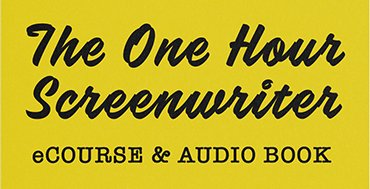The Woman in the Window – Day Three – #40movies40days


The Woman in the Window tells the story of Richard Wanley (Edward G. Robinson) whose beloved wife leaves with the children for a long summer holiday in Maine. On the way to have a drink at his club, Wanley sees the portrait of a beautiful woman in a gallery window. His friends arrive to meet him and they too remark on the portrait as their “dream girl.”
One of Wanley’s friends at the club is District Attorney Frank Laylor (Raymond Massey). The men bemoan the lack of adventure in their lives. Laylor muses about middle-aged men kicking up their heels and speaks of his experience as a prosecutor: “Trouble often starts from little things,” he says. “Genuine actual tragedy issues directly out of pure carelessness or the merest trifle. It results from the casual impulse, the idle flirtation or just one drink too many.”


She flirts. Wanley buys her a drink. They end up in her apartment, where she has a portfolio of other portraits of her by the same artist. Her jealous boyfriend bursts in and, in a struggle, Wanley kills the intruder by stabbing him in the back with a scissors. Wanley and the woman discuss calling the police and then decide to cover up the crime instead. Guilt, blackmail and a tightening noose of suspicion ensue.
Unfortunately an unsatisfying ending was forced on the film by the Hays Office morality code. It’s a cheat and the easy way out. In a strange way I suppose it is emblematic of the “easy way out” that ruins Wanley’s character. Despite this fault, the film is an interesting early version of American film noir.
According to Wikipedia: (The Woman in the Window is) based on J. H. Wallis’ novel Once Off Guard. The story features two surprise twists at the end. Scriptwriter Nunnally Johnson founded International Pictures (his own independent production company) after writing successful films such as The Grapes of Wrath (1940) and other John Ford films. (His partner was William Goetz.) Johnson chose The Woman in the Window as the production company’s premiere project.”


A couple of things struck me about this film. First of all, by silly co-incidence, the book Wanley takes down from the library shelf to read in his club is The Song of Solomon. That poem happens to figure prominently in a project I am working on right now. I love those odd and slightly thrilling little “signs” that occasionally pop up as you are nursing a project along, don’t you?
The second thing that struck me is the issue of integrity. Wanley is a good a man. He has loving family whom he adores. He is a well-regarded professor and a generally decent guy. He is foolish enough to follow a beautiful charming woman to her apartment. Although he has no intention of sleeping with her, he is a bit vain and allows himself to be flattered by her attention. He is surprised by the jealous lover and clearly kills him in self-defense.
If Wanley had called the police, he would have found himself in the center of a scandal. He would have been embarrassed and humiliated in front of his wife and perhaps might even have lost his job at the college. But his dilemma is one caused by simple human male stupidity. The matter becomes criminal when he doesn’t report the death, dumps the body and lies to the police. He then plots a second murder to cover up the first. The simple act of picking up the phone and then putting it down strips him of his first bit of integrity.
Evil always starts with a small thing– stupid carelessness, hurtful blurted words, a harmless flirtation, a bit too much to drink, an unchecked impulse. This quote by Edward Tufte says it all– “Evil does not have horns or breathe fire or call explosive attention to itself. It is a force (or a fear) that slowly and imperceptibly erodes our standards, clouds our judgements, lulls (or paralyzes) us into submission and, before we realize it, has lead us down a regrettable path from which there is no return.”
We lose our integrity bit by bit, decision by decision, one small choice at a time. Thoughts (or fears) create action. Action creates habits. Habits build (or destroy) Character. Character creates Destiny. That’s part of the larger question I am looking at for myself. Just how do I want to direct my own destiny? What new choices need to be made? What new habits created?
Here’s the first nine minutes of the film–




Create a visual map for a character’s emotional journey. Pull stories from character rather from rote story structure beats. Some of the largest international media companies, use this in story and character development.


A clear concise guide for writers and producers to have by their side as they embark on a project. It gives a really vital reminder of what is key for story success.

No comment yet, add your voice below!